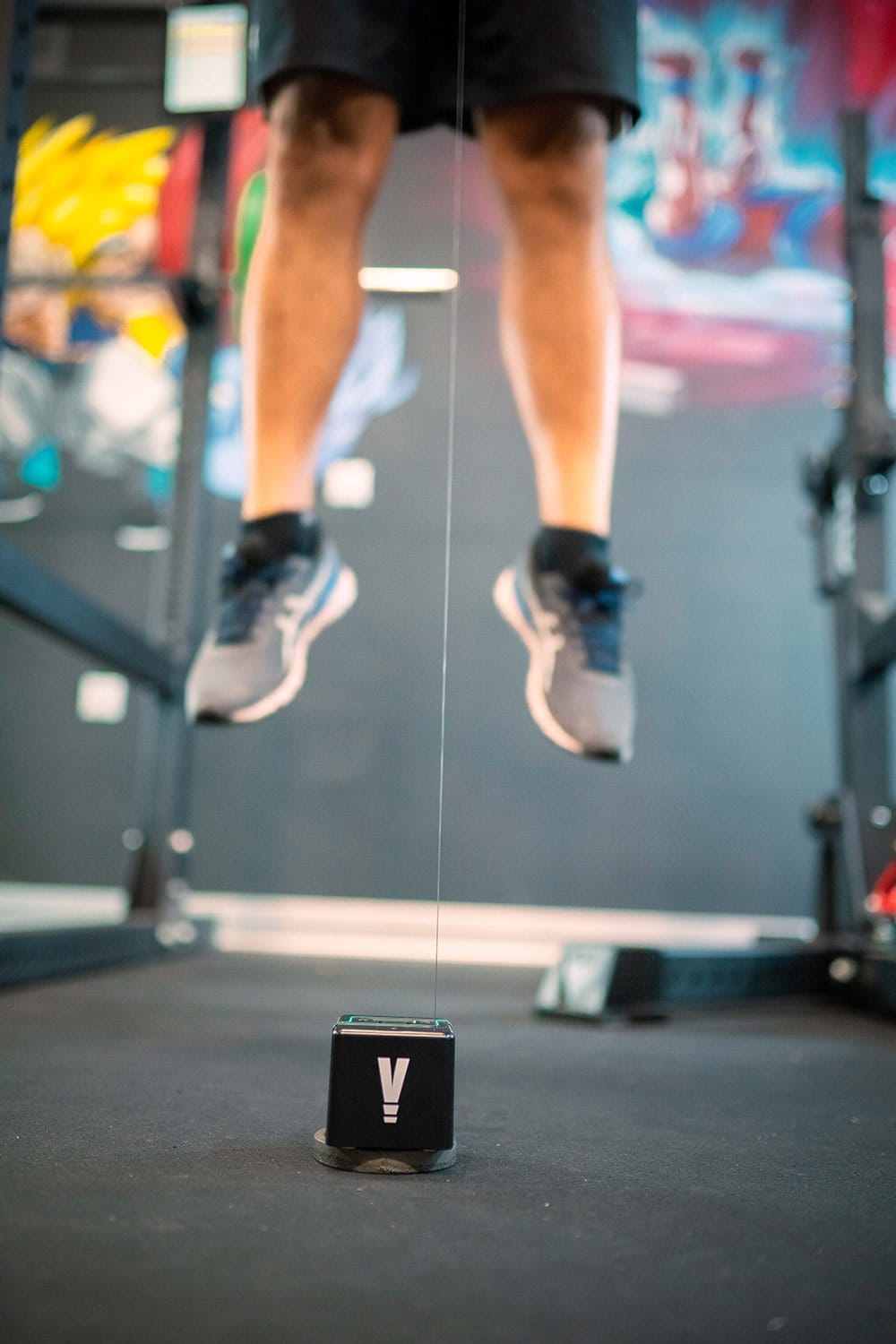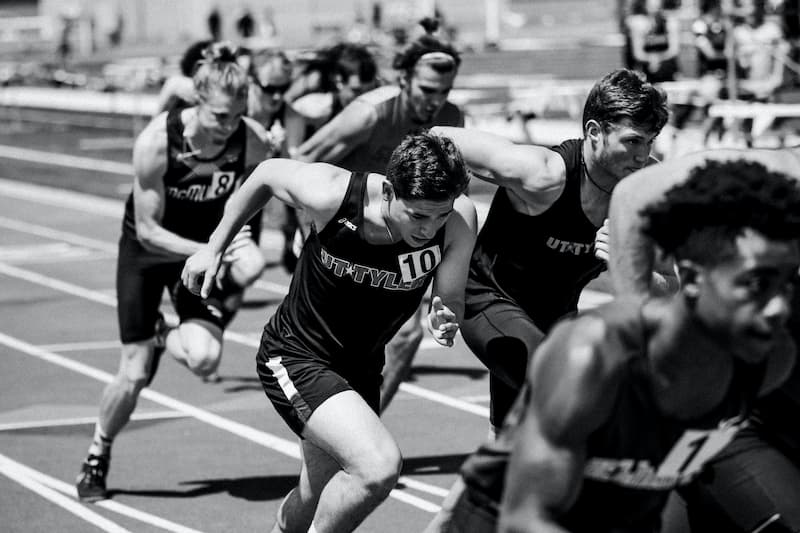5 de July de 2021
Why It Is Important To Improve Velocity In Weight Training?
This is a question that many athletes may ask themselves at some point in their sports career. By improving my velocity in lifting, will I improve my sports development? How does improving velocity in my weight training benefit me? How do I improve my velocity? Keep reading if you want to know more!
In addition to the importance of the training variables that we all know such as volume, frequency or intensity, there are others to take into account when all these are correctly designed to our needs and objectives. The velocity at which we execute our exercises has become very important in the field of sports and physical exercise, especially in recent years.
When we do strength training with weight we are exerting force against gravity to lift that weight, known in the training world as the concentric phase, which we will focus on in this article.
Velocity-Based Training (VBT) is a training modality that focuses on achieving the maximum possible velocity in your lifts or movements.
González-Badillo’s research found an almost perfect relationship between% 1RM and the corresponding velocity in the individual’s velocity profile. In other words, when a subject tests his 1RM, his velocity in the corresponding percentages of 1RM always stays the same.
What benefitcs can I get from Velocity-Based training?
- It is more effective in terms of strength / power improvements.
- Improves neuromuscular adaptations
- It is more efficient, since you achieve more with less volume and less time, although we will delve into this concept later.
- It is safer and less harmful, since training is far from failure.
In addition, if you have an encoder like the one Vitruve offers, the workouts will be much more precise since we will be training with the% load actually programmed and you will have constant control, session by session, of how your progress is evolving.
We have to keep in mind that it is not necessary to always move high% relative load (1RM) to promote greater strength gains. The important thing is to know what type of loads you want to improve the most, following the principle of specificity.
In addition, another advantage of focusing on velocity with a Vitruve encoder is that thanks to the immediate auditory feedback that you can get from the application, you can maintain maximum concentration in each lift.

This offers an added bonus to the training itself since wanting to beat your own record will make you, unconsciously, want to lift faster than the previous time.
Will improving my velocity in lifting will improve my sports development?
The answer, without a doubt, yes. Many sports are based on velocity, whether it be strength, reaction velocity, or a mixture of both. The velocity at which we jump, run or hit, for example, is highly interrelated with the velocity at which we can lift weight in our workouts, in other words, the faster we lift the weight, the faster we will be on the pitch.

It is also much more efficient since when we perform a series, we must be far from failure. We will perform half of the possible repetitions, taking into account that when we lose velocity in the concentric phase we will have to stop the series to avoid accumulating fatigue. In this way, we will perform shorter series and achieve more in less time.
How do I improve my velocity?
Before starting to train VBT you have to know what your starting point is and where you are. Have you just started weight training or, on the contrary, have you been training for a long time and have you mastered the correct execution of the exercises?
If you are not very sure where you are, we recommend that you invest 5 minutes in this ‘Guide to start with your VBT’, where we explain step by step how to start training based on the velocity of your lifts. But, in summary, it is essential that you know that before starting to focus on velocity, you must have a minimum technical mastery.

Other basic aspects to take into account once you have a correct technique are:∙ Keep the focus on lifting as fast as possible
∙ Try not to lose + 20-30% of the velocity in the series. If we lose this velocity, we must stop the series immediately in order not to accumulate fatigue.
This type of training is usually used to increase neural strength gains. Even so, if our goal is hypertrophy (structural strength), we can train based on VBT by performing sets above 40% loss of velocity since we must get a little closer to the maximum number of repetitions possible.
References
∙ Balsalobre Fernández, C.,&Jiménez Reyes,P. (2014). Entrenamiento de Fuerza: nuevas perspectivas metodológicas.
∙ González-Badillo, J. J., & Sánchez-Medina, L. (2010). Movement velocity as a measure of loading intensity in resistance training. International journal of sports medicine, 31(5), 347–352. https://doi.org/10.1055/s-0030-1248333
∙ Pérez-Castilla, A., Piepoli, A., Delgado-García, G., Garrido-Blanca, G., & García Ramos, A. (2019). Reliability and Concurrent Validity of Seven Commercially Available Devices for the Assessment of Movement Velocity at Different Intensities During the Bench Press. Journal of strength and conditioning research, 33(5), 1258–1265. https://doi.org/10.1519/JSC.0000000000003118
∙ Pareja-Blanco, F., Rodríguez-Rosell, D., Sánchez-Medina, L., Sanchis-Moysi, J., Dorado, C., Mora-Custodio, R., Yáñez-García, J. M., Morales-Alamo, D., Pérez Suárez, I., Calbet, J., & González-Badillo, J. J. (2017). Effects of velocity loss during resistance training on athletic performance, strength gains and muscle adaptations. Scandinavian journal of medicine & science in sports, 27(7), 724– 735. https://doi.org/10.1111/sms.12678
∙ https://g-se.com/comparacion-de-metodos-de-sobrecarga-basados-en porcentajes-tradicional-y-basados-en-velocidad-sobre-adaptaciones-de-la potencia-y-fuerza-maxima-bp-e5e32c85b49a42

